 Would you pay for an air ticket just to eat hawker food in Penang? The answer for me is yes. Without doubt, I am willing to do so for hawker food that has fed more than three generations of families, that does not have ambitions to become a franchise multinational corporation, that believes in no shortcuts or the easy way out when it comes to preparation and ingredients, that is true to its own cooking and has maintained the standards of expectations from its loyal customers one generation after another. Here in Penang, hawker food is real culinary art seen in the form as the most basics of basics in the different dinning levels of food appreciation. The fact is the standard of the foods produced by the hawkers on this island off the coast of the mainland of peninsula Malaysia is so unmatched elsewhere that it becomes the culinary capital of the hawkers’ culture in South East Asia. There is passion, pride and dignity to prepare great tasty fare for the locals who formed the majority of their customers and are their strictest silent critics on standards of expectation. No hawker on Penang Island can survive for generations if they serve trashy food by relying on prepared sauces and spice pastes or taking the shortcuts with processed foods. The hawkers are not ambitious to offer wide varieties of foods, preferring instead to just focus a few items and perfecting the art of preparing them. Competition for customers is fierce and intense based on quality, hence the difference in standards from stall to stall is not such a wide gap like in Singapore. The winning stall scores by having an extra dollop of delicious sauce or generous toppings and garnishes that can result in an extra dimension of flavour.
Would you pay for an air ticket just to eat hawker food in Penang? The answer for me is yes. Without doubt, I am willing to do so for hawker food that has fed more than three generations of families, that does not have ambitions to become a franchise multinational corporation, that believes in no shortcuts or the easy way out when it comes to preparation and ingredients, that is true to its own cooking and has maintained the standards of expectations from its loyal customers one generation after another. Here in Penang, hawker food is real culinary art seen in the form as the most basics of basics in the different dinning levels of food appreciation. The fact is the standard of the foods produced by the hawkers on this island off the coast of the mainland of peninsula Malaysia is so unmatched elsewhere that it becomes the culinary capital of the hawkers’ culture in South East Asia. There is passion, pride and dignity to prepare great tasty fare for the locals who formed the majority of their customers and are their strictest silent critics on standards of expectation. No hawker on Penang Island can survive for generations if they serve trashy food by relying on prepared sauces and spice pastes or taking the shortcuts with processed foods. The hawkers are not ambitious to offer wide varieties of foods, preferring instead to just focus a few items and perfecting the art of preparing them. Competition for customers is fierce and intense based on quality, hence the difference in standards from stall to stall is not such a wide gap like in Singapore. The winning stall scores by having an extra dollop of delicious sauce or generous toppings and garnishes that can result in an extra dimension of flavour.Nothing beats coming to the island itself for the first hand experience. Not even the regular Penang food fairs abroad that represent only a scratch on the surface of the many wonderful dishes found on this island of hawker gastronomy. To feel its essence, it pays to know someone in the trade who can show you the best with regular updates. Yes, information in culinary guides is not 100% updated and reliable as the standards and locations of the hawkers can change all the time. When the business is passed down to the next generation, taste can change for better or worse depending on the attitude of the successor. For sure is that the taste is not necessary bad but it may no longer enjoy the tile of being the best when things get complacent. Some hawkers tend to shift locations too and many of them call it a day when they no longer need to depend on the trade for survival. Hence, the best guide is to know the person who plies the same trade among them.
Luckily since my childhood days, I happen to know one such person.
 This person whom I respectfully call Uncle Lee is Mr Lee Eng Huat, a family friend whom I have known for twenty years ever since we worked together at some Penang Food Fair. Uncle Lee is the undisputed “Indian chief” who puts the team of hawkers together whenever an invitation comes by from abroad. In his own capacity, Uncle Lee is the third generation of hawkers inheriting this humble ice kacang stall that was started by his grandfather along Lorong Swatow at the former New World’s Amusement Park. His daughter now helps him daily, learning the ropes of the trade as each day goes by. Uncle Lee sells ice kacang, but with different combinations of fruit, jellies and toppings that gives each individual variant its unique character. His sister compliments along by selling Penang Rojak, a unique salad of fruits and vegetables dressed in a spicy nutty pungent shrimp paste dressing. Things have change in the last few years with the street hawkers moving in to a newly constructed food court right on the former New World Park. Interestingly, a part of the wall that used to fence the former entertainment park is still retained as part of the entrance to the new food court.
This person whom I respectfully call Uncle Lee is Mr Lee Eng Huat, a family friend whom I have known for twenty years ever since we worked together at some Penang Food Fair. Uncle Lee is the undisputed “Indian chief” who puts the team of hawkers together whenever an invitation comes by from abroad. In his own capacity, Uncle Lee is the third generation of hawkers inheriting this humble ice kacang stall that was started by his grandfather along Lorong Swatow at the former New World’s Amusement Park. His daughter now helps him daily, learning the ropes of the trade as each day goes by. Uncle Lee sells ice kacang, but with different combinations of fruit, jellies and toppings that gives each individual variant its unique character. His sister compliments along by selling Penang Rojak, a unique salad of fruits and vegetables dressed in a spicy nutty pungent shrimp paste dressing. Things have change in the last few years with the street hawkers moving in to a newly constructed food court right on the former New World Park. Interestingly, a part of the wall that used to fence the former entertainment park is still retained as part of the entrance to the new food court.With Uncle Lee and his connections, N and I get to go around various places to check out some of the best hawker stalls and at the right time to visit them. Listed below are some of the places that we have checked out ourselves as well as recommended by Uncle Lee to us recently:
Lor Bak:


Similar to Ngo Hiang like what we have in Singapore’s hawker fare, we sampled three places for this dish that is made of up different kinds of deep fried fritters eaten with a sweet chilli sauce or a starchy dip. The fritters could be anything from batter coated sweet potatoes, yam, shrimps, squid and fish fillets. Spring rolls and five spice flavoured meat rolled in beancurd skin are also part of the ensemble of this dish. Benchmarks for this dish include a great crispy batter for the fritters, fragrant chunky pieces of meat for the spiced beancurd rolls and a great chilli sauce to dip with. First location was the stall that operated in Uncle Lee’s food court. The taste was only so so. But the next two locations that were recommended by Uncle Lee had great outstanding merits. Both operated only in the mornings from 8am to 3pm. The first stall is at One Corner Café, located on Jalan Bangsar behind Lorong Swatow. This was also the stall that came down with Uncle Lee for the recent Penang food promotion @ York Hotel. But here in its original location, it was far much better in taste as the hawkers had to work with food budget restraints when they do their promotions Singapore. Hence when one is forced to compromise on quality ingredients, taste performance is also compromised. Here on its home ground, the fritters were freshly fried on order. Meat rolls were chunkier, fish fillets were plump and fresh and more varieties were also offered than what was put out at York Hotel.
The other great Lor Bak stall that we like was one standing at a corner coffee shop named Kheng Pin at the corner of Jalan Sri Bahari and Jalan Penang, opposite the Oriental Hotel. A veteran in the business, this Lor Bak stall features the usual standard items plus a variety of squid, shrimp and fish fritters, all home made and cooked on the spot. What made this stall outstanding was the batter for the fritters. It was light on taste and delivered a superb crispiness on all seafood crusted with it. The meat rolls were excellent too, very well marinated in spices and seasonings to the extent the meat comes out a little pinkish due to the brining effect of letting the meat sit long enough in the salty marinade.
Assam Laksa:


 Currently I have two favourite stalls for this dish of thick rice noodles with a tamarind infused fish broth. The one that I have been patronising since coming to Penang for the first time is just opposite the Air Hitam Market along the road that leads to Penang’s most famous temple, Kek Lok Si. This stall is pretty much a one man operation and hence despite repeated invitations by Uncle Lee to join him in overseas food promotions, was never able to make it here.
Currently I have two favourite stalls for this dish of thick rice noodles with a tamarind infused fish broth. The one that I have been patronising since coming to Penang for the first time is just opposite the Air Hitam Market along the road that leads to Penang’s most famous temple, Kek Lok Si. This stall is pretty much a one man operation and hence despite repeated invitations by Uncle Lee to join him in overseas food promotions, was never able to make it here. To me, he serves the best assam laksa in Penang and one bowl is never enough. The quality of taste has been consistent always and the final touch of prawn paste has always been generous which gives the tangy broth a pungent fragrance. The broth is made with two kinds of oily fishes, Ikan Kembong and Sardines which brings out a better body to the dish. Tamarind or assam as it is known locally provides the desired tanginess that is balanced with sweetness from palm sugar. A variety of fresh spices like shallots, blue ginger, lemongrass and garlic add aromatic dimensions and the combination of all ingredients into the pot of broth creates aromas that you can sniff out even in distances away.
To me, he serves the best assam laksa in Penang and one bowl is never enough. The quality of taste has been consistent always and the final touch of prawn paste has always been generous which gives the tangy broth a pungent fragrance. The broth is made with two kinds of oily fishes, Ikan Kembong and Sardines which brings out a better body to the dish. Tamarind or assam as it is known locally provides the desired tanginess that is balanced with sweetness from palm sugar. A variety of fresh spices like shallots, blue ginger, lemongrass and garlic add aromatic dimensions and the combination of all ingredients into the pot of broth creates aromas that you can sniff out even in distances away.
 For the preferred version in downtown area, at the Joo Hooi coffee shop along the middle stretch of Penang Road, there is a stall that sells a version made with mackerel meat than the other two oily fishes mentioned above. The broth is sweeter in taste but the topping of prawn paste is rather diluted than thick so hence it is neither as rich nor fragrant as the one in Air Hitam. But still the rich stock makes up for the slack in the topping and if u are in downtown and need a quick for your craving for assam laksa, this would be the place for it.
For the preferred version in downtown area, at the Joo Hooi coffee shop along the middle stretch of Penang Road, there is a stall that sells a version made with mackerel meat than the other two oily fishes mentioned above. The broth is sweeter in taste but the topping of prawn paste is rather diluted than thick so hence it is neither as rich nor fragrant as the one in Air Hitam. But still the rich stock makes up for the slack in the topping and if u are in downtown and need a quick for your craving for assam laksa, this would be the place for it.
The other great Lor Bak stall that we like was one standing at a corner coffee shop named Kheng Pin at the corner of Jalan Sri Bahari and Jalan Penang, opposite the Oriental Hotel. A veteran in the business, this Lor Bak stall features the usual standard items plus a variety of squid, shrimp and fish fritters, all home made and cooked on the spot. What made this stall outstanding was the batter for the fritters. It was light on taste and delivered a superb crispiness on all seafood crusted with it. The meat rolls were excellent too, very well marinated in spices and seasonings to the extent the meat comes out a little pinkish due to the brining effect of letting the meat sit long enough in the salty marinade.
Assam Laksa:


 Currently I have two favourite stalls for this dish of thick rice noodles with a tamarind infused fish broth. The one that I have been patronising since coming to Penang for the first time is just opposite the Air Hitam Market along the road that leads to Penang’s most famous temple, Kek Lok Si. This stall is pretty much a one man operation and hence despite repeated invitations by Uncle Lee to join him in overseas food promotions, was never able to make it here.
Currently I have two favourite stalls for this dish of thick rice noodles with a tamarind infused fish broth. The one that I have been patronising since coming to Penang for the first time is just opposite the Air Hitam Market along the road that leads to Penang’s most famous temple, Kek Lok Si. This stall is pretty much a one man operation and hence despite repeated invitations by Uncle Lee to join him in overseas food promotions, was never able to make it here. To me, he serves the best assam laksa in Penang and one bowl is never enough. The quality of taste has been consistent always and the final touch of prawn paste has always been generous which gives the tangy broth a pungent fragrance. The broth is made with two kinds of oily fishes, Ikan Kembong and Sardines which brings out a better body to the dish. Tamarind or assam as it is known locally provides the desired tanginess that is balanced with sweetness from palm sugar. A variety of fresh spices like shallots, blue ginger, lemongrass and garlic add aromatic dimensions and the combination of all ingredients into the pot of broth creates aromas that you can sniff out even in distances away.
To me, he serves the best assam laksa in Penang and one bowl is never enough. The quality of taste has been consistent always and the final touch of prawn paste has always been generous which gives the tangy broth a pungent fragrance. The broth is made with two kinds of oily fishes, Ikan Kembong and Sardines which brings out a better body to the dish. Tamarind or assam as it is known locally provides the desired tanginess that is balanced with sweetness from palm sugar. A variety of fresh spices like shallots, blue ginger, lemongrass and garlic add aromatic dimensions and the combination of all ingredients into the pot of broth creates aromas that you can sniff out even in distances away. For the preferred version in downtown area, at the Joo Hooi coffee shop along the middle stretch of Penang Road, there is a stall that sells a version made with mackerel meat than the other two oily fishes mentioned above. The broth is sweeter in taste but the topping of prawn paste is rather diluted than thick so hence it is neither as rich nor fragrant as the one in Air Hitam. But still the rich stock makes up for the slack in the topping and if u are in downtown and need a quick for your craving for assam laksa, this would be the place for it.
For the preferred version in downtown area, at the Joo Hooi coffee shop along the middle stretch of Penang Road, there is a stall that sells a version made with mackerel meat than the other two oily fishes mentioned above. The broth is sweeter in taste but the topping of prawn paste is rather diluted than thick so hence it is neither as rich nor fragrant as the one in Air Hitam. But still the rich stock makes up for the slack in the topping and if u are in downtown and need a quick for your craving for assam laksa, this would be the place for it. Char Koay Teow
 At the same Joo Hooi coffeeshop, there is also a pretty decent Char Koay Teow Stall too. The serving which costs about the same in Singapore has extra fish cake slices and large prawns on top of the regular cockles and Chinese sausages. Penang’s version of Char Koay Teow uses entirely only the flat rice noodles instead of a mix with yellow hokkien mee. As one of the most significant icon of Penang Hawker fare, nobody will dare to sell a lousy version due to stiff competition. But if due recognition were to be given, I would prefer to accredit the best ones like the way the Oscars does for movie stars. That is to have two recognitions for this category, one each for the Best Lady CKT fryer and Best Gentleman CKT fryer. This is how good it can be in Penang.
At the same Joo Hooi coffeeshop, there is also a pretty decent Char Koay Teow Stall too. The serving which costs about the same in Singapore has extra fish cake slices and large prawns on top of the regular cockles and Chinese sausages. Penang’s version of Char Koay Teow uses entirely only the flat rice noodles instead of a mix with yellow hokkien mee. As one of the most significant icon of Penang Hawker fare, nobody will dare to sell a lousy version due to stiff competition. But if due recognition were to be given, I would prefer to accredit the best ones like the way the Oscars does for movie stars. That is to have two recognitions for this category, one each for the Best Lady CKT fryer and Best Gentleman CKT fryer. This is how good it can be in Penang.
 At the same Joo Hooi coffeeshop, there is also a pretty decent Char Koay Teow Stall too. The serving which costs about the same in Singapore has extra fish cake slices and large prawns on top of the regular cockles and Chinese sausages. Penang’s version of Char Koay Teow uses entirely only the flat rice noodles instead of a mix with yellow hokkien mee. As one of the most significant icon of Penang Hawker fare, nobody will dare to sell a lousy version due to stiff competition. But if due recognition were to be given, I would prefer to accredit the best ones like the way the Oscars does for movie stars. That is to have two recognitions for this category, one each for the Best Lady CKT fryer and Best Gentleman CKT fryer. This is how good it can be in Penang.
At the same Joo Hooi coffeeshop, there is also a pretty decent Char Koay Teow Stall too. The serving which costs about the same in Singapore has extra fish cake slices and large prawns on top of the regular cockles and Chinese sausages. Penang’s version of Char Koay Teow uses entirely only the flat rice noodles instead of a mix with yellow hokkien mee. As one of the most significant icon of Penang Hawker fare, nobody will dare to sell a lousy version due to stiff competition. But if due recognition were to be given, I would prefer to accredit the best ones like the way the Oscars does for movie stars. That is to have two recognitions for this category, one each for the Best Lady CKT fryer and Best Gentleman CKT fryer. This is how good it can be in Penang. Undisputedly, the Best Lady CKT fryer award should go to the Auntie Char Koay Teow Stall @ Lorong Selamat where customers are willing to brave the hot sun or rain for sometimes up to an hour to get enough satisfaction of their cravings. Fried in a seasoned aluminium wok over a charcoal stove, its gets so deliciously smoky that Auntie needs a pair of goggles to keep focus on what’s going on in the wok.  The wait is always worth it as u get a plate of deliciously lard laden fried koay teow that taste as good as it smells. While it is sinfully rich with the lard, without it, CKT is totally spineless in taste as the other condiments are secondary. The lard delivers the fragrance and lifts the synergy of flavours from other ingredients during the cooking process. The control of fire is equally important as the right temperature creates the wok charred notes and maintains the right level of moisture between noodles and ingredients.
The wait is always worth it as u get a plate of deliciously lard laden fried koay teow that taste as good as it smells. While it is sinfully rich with the lard, without it, CKT is totally spineless in taste as the other condiments are secondary. The lard delivers the fragrance and lifts the synergy of flavours from other ingredients during the cooking process. The control of fire is equally important as the right temperature creates the wok charred notes and maintains the right level of moisture between noodles and ingredients.
 The Best Gentleman CKT Fryer should go to Ah Leng, formerly of Kimberly Street who now fries the noodles at a different location. Currently Ah Leng is at the Koon Hiang coffee shop at the corner between Jalan Honolulu and Jalan Dato Keramat. I have eaten char koay teow out of Ah Leng’s hands since 15 years ago Widely reputed to be the king of all char koay teow hawkers, Ah Leng doesn’t open shop unless all his ingredients are available and in place. He frequently takes breaks of a few days or even an entire week when he feels like it hence catching him on a day that he opens for business is equal to hitting a culinary jackpot. The title of king does not come as hot air as Ah Leng’s Char Kway Teow is crowned with a serving of large prawns and sweet tasting mantis prawns or “lai liu har” as the Cantonese call it. Even at RM8 a portion, it still puts our local versions to shame with its perceived value. My personal preference is that while both Ah Leng and Auntie’s Char Koay Teow are on par with each other in terms of taste, Ah Leng wins with a more affable personality.
The Best Gentleman CKT Fryer should go to Ah Leng, formerly of Kimberly Street who now fries the noodles at a different location. Currently Ah Leng is at the Koon Hiang coffee shop at the corner between Jalan Honolulu and Jalan Dato Keramat. I have eaten char koay teow out of Ah Leng’s hands since 15 years ago Widely reputed to be the king of all char koay teow hawkers, Ah Leng doesn’t open shop unless all his ingredients are available and in place. He frequently takes breaks of a few days or even an entire week when he feels like it hence catching him on a day that he opens for business is equal to hitting a culinary jackpot. The title of king does not come as hot air as Ah Leng’s Char Kway Teow is crowned with a serving of large prawns and sweet tasting mantis prawns or “lai liu har” as the Cantonese call it. Even at RM8 a portion, it still puts our local versions to shame with its perceived value. My personal preference is that while both Ah Leng and Auntie’s Char Koay Teow are on par with each other in terms of taste, Ah Leng wins with a more affable personality.
Prawn Noodles:
The father and son team next to Uncle Lee’s stall along Lorong Swatow used to be very good until the old man kicked the bucket and somehow the son couldn’t grasp the essence of it from dad. This time round, we found two other great places with individual merits.
 The wait is always worth it as u get a plate of deliciously lard laden fried koay teow that taste as good as it smells. While it is sinfully rich with the lard, without it, CKT is totally spineless in taste as the other condiments are secondary. The lard delivers the fragrance and lifts the synergy of flavours from other ingredients during the cooking process. The control of fire is equally important as the right temperature creates the wok charred notes and maintains the right level of moisture between noodles and ingredients.
The wait is always worth it as u get a plate of deliciously lard laden fried koay teow that taste as good as it smells. While it is sinfully rich with the lard, without it, CKT is totally spineless in taste as the other condiments are secondary. The lard delivers the fragrance and lifts the synergy of flavours from other ingredients during the cooking process. The control of fire is equally important as the right temperature creates the wok charred notes and maintains the right level of moisture between noodles and ingredients. The Best Gentleman CKT Fryer should go to Ah Leng, formerly of Kimberly Street who now fries the noodles at a different location. Currently Ah Leng is at the Koon Hiang coffee shop at the corner between Jalan Honolulu and Jalan Dato Keramat. I have eaten char koay teow out of Ah Leng’s hands since 15 years ago Widely reputed to be the king of all char koay teow hawkers, Ah Leng doesn’t open shop unless all his ingredients are available and in place. He frequently takes breaks of a few days or even an entire week when he feels like it hence catching him on a day that he opens for business is equal to hitting a culinary jackpot. The title of king does not come as hot air as Ah Leng’s Char Kway Teow is crowned with a serving of large prawns and sweet tasting mantis prawns or “lai liu har” as the Cantonese call it. Even at RM8 a portion, it still puts our local versions to shame with its perceived value. My personal preference is that while both Ah Leng and Auntie’s Char Koay Teow are on par with each other in terms of taste, Ah Leng wins with a more affable personality.
The Best Gentleman CKT Fryer should go to Ah Leng, formerly of Kimberly Street who now fries the noodles at a different location. Currently Ah Leng is at the Koon Hiang coffee shop at the corner between Jalan Honolulu and Jalan Dato Keramat. I have eaten char koay teow out of Ah Leng’s hands since 15 years ago Widely reputed to be the king of all char koay teow hawkers, Ah Leng doesn’t open shop unless all his ingredients are available and in place. He frequently takes breaks of a few days or even an entire week when he feels like it hence catching him on a day that he opens for business is equal to hitting a culinary jackpot. The title of king does not come as hot air as Ah Leng’s Char Kway Teow is crowned with a serving of large prawns and sweet tasting mantis prawns or “lai liu har” as the Cantonese call it. Even at RM8 a portion, it still puts our local versions to shame with its perceived value. My personal preference is that while both Ah Leng and Auntie’s Char Koay Teow are on par with each other in terms of taste, Ah Leng wins with a more affable personality.Prawn Noodles:
The father and son team next to Uncle Lee’s stall along Lorong Swatow used to be very good until the old man kicked the bucket and somehow the son couldn’t grasp the essence of it from dad. This time round, we found two other great places with individual merits.
At Presgrave Road, this family run business starts from 5pm onwards till the wee hours of the morning. I found the stock here very good with strong meaty dimensions and fried prawn shell flavours. The way the broth of the prawn noodles are prepared defines why Singapore’s hawkers’ version can never beat their counterparts in Penang, never mind the fact that the condiments in SG’s version are more luxurious. Raw ingredients and patience play an important role in the brewing of a good stock for the noodles.  The most difficult part in preparation is the blending of prawn shells with the meat stock and an initial round of simmering, followed by straining the essence back into the simmering broth. This is something that is not practised in SG which explains the inferiority in taste as compared to the Penang version. This crucial step, though time consuming allows the full flavour of the prawn shells to be extracted out to the maximum, providing the important flavours notes with a strength that defines it as a benchmark of excellence. In the other areas of preparation, dried chillies is combined with pre-soaked dried shrimp and blended into a paste, which is then cook up with the prawn shells and caramelised rock sugar as the foundation of the stock before pork bones and skin are added to provide “meatiness” to the broth. With this winning stock base, the garnishing ingredients that can range from boiled pig skin, hardboiled eggs, spare ribs and peeled prawns completes the final picture of assembly to a well executed dish. Another trade secret share was most hawkers would rather use prawns caught from the sea than farmed freshwater varieties as it is believed that the prawns from sea are tastier due to the salinity of the environment that they live in.
The most difficult part in preparation is the blending of prawn shells with the meat stock and an initial round of simmering, followed by straining the essence back into the simmering broth. This is something that is not practised in SG which explains the inferiority in taste as compared to the Penang version. This crucial step, though time consuming allows the full flavour of the prawn shells to be extracted out to the maximum, providing the important flavours notes with a strength that defines it as a benchmark of excellence. In the other areas of preparation, dried chillies is combined with pre-soaked dried shrimp and blended into a paste, which is then cook up with the prawn shells and caramelised rock sugar as the foundation of the stock before pork bones and skin are added to provide “meatiness” to the broth. With this winning stock base, the garnishing ingredients that can range from boiled pig skin, hardboiled eggs, spare ribs and peeled prawns completes the final picture of assembly to a well executed dish. Another trade secret share was most hawkers would rather use prawns caught from the sea than farmed freshwater varieties as it is believed that the prawns from sea are tastier due to the salinity of the environment that they live in.


 The most difficult part in preparation is the blending of prawn shells with the meat stock and an initial round of simmering, followed by straining the essence back into the simmering broth. This is something that is not practised in SG which explains the inferiority in taste as compared to the Penang version. This crucial step, though time consuming allows the full flavour of the prawn shells to be extracted out to the maximum, providing the important flavours notes with a strength that defines it as a benchmark of excellence. In the other areas of preparation, dried chillies is combined with pre-soaked dried shrimp and blended into a paste, which is then cook up with the prawn shells and caramelised rock sugar as the foundation of the stock before pork bones and skin are added to provide “meatiness” to the broth. With this winning stock base, the garnishing ingredients that can range from boiled pig skin, hardboiled eggs, spare ribs and peeled prawns completes the final picture of assembly to a well executed dish. Another trade secret share was most hawkers would rather use prawns caught from the sea than farmed freshwater varieties as it is believed that the prawns from sea are tastier due to the salinity of the environment that they live in.
The most difficult part in preparation is the blending of prawn shells with the meat stock and an initial round of simmering, followed by straining the essence back into the simmering broth. This is something that is not practised in SG which explains the inferiority in taste as compared to the Penang version. This crucial step, though time consuming allows the full flavour of the prawn shells to be extracted out to the maximum, providing the important flavours notes with a strength that defines it as a benchmark of excellence. In the other areas of preparation, dried chillies is combined with pre-soaked dried shrimp and blended into a paste, which is then cook up with the prawn shells and caramelised rock sugar as the foundation of the stock before pork bones and skin are added to provide “meatiness” to the broth. With this winning stock base, the garnishing ingredients that can range from boiled pig skin, hardboiled eggs, spare ribs and peeled prawns completes the final picture of assembly to a well executed dish. Another trade secret share was most hawkers would rather use prawns caught from the sea than farmed freshwater varieties as it is believed that the prawns from sea are tastier due to the salinity of the environment that they live in.

The other place that dishes up a mean spicy bowl of prawn noodles is at the one corner coffee shop at the Bangsar Road and a stone’s throw away from New World Food Court. This stall here serves the prawn noodles for breakfast only, launching the first bowls just before sunrise and clearing out everything before the call for midday prayers at the nearby mosque can be heard. The stock here is really spicy as compared to other places that I have tasted and at the end had to be washed down with two glasses of “Teh O Peng” or iced tea without milk as it is known locally. Compare with the Presgrave version, the prawn dimensions stood out more than the meaty notes for the broth. If u can ignore the spicy chilli notes and just focus on the other flavours, it is still very good. Given the popularity of the locals with this stall, be prepared to wait up to 45minutes for your order. Anyway if you don’t have the patience to wait, u can forget about having great hawker food in Penang.
Mee Jawa:


Mee Jawa:


There are a few variations of this dish, comes in both blanched and fried versions. I have a preference for the latter as my first encounter with Mee Jawa was a plate straight out of the wok. The fried version of this noodle dish has a similar resemblance to our local Punggol Style Mee Goreng with differences in garnishes and condiments. The blanched version is done the same way as mee rebus, with the noodles first blanched in water, laced with the standard condiments and ladled over with a orange red gravy made from chillies, tomato ketchup and sweet potatoes. I preferred the more exciting wok fried version which the noodles are tossed in ketchup and a chilli paste and enriched with an egg. The standard condiments of fried dough fritters, potatoes, fresh prawns and Chinese mustard greens add on colour and texture to the noodles and when it is well cooked, has the slightly charred wok taste, moist not soggy and a perfumed with a generous amount of fried shallots.
Apom Balik:



Apom Balik:



The favourite street snack on Penang Island, these are also sometimes interpreted as the Chinese rice flour based Pancakes with bananas and sweet corn fillings. The best I have tasted so far comes from the roadside stall along the left side of Jalan Burma right on the traffic pedestrian before Hin Heang Biscuits shop. Business is so good that this affable Uncle sells hundreds of pieces a day. There isn’t a time where traffic doesn’t stop to pick up some Apom from this Uncle. Most customers would pack by the set of five pieces are will to wait in the sun for it. The secret to this winning recipe is choosing the right ingredients even though it is such a simple preparation. The batter consists of coconut milk mixed with rice flour, desiccated coconut, sugar and eggs. Choosing the ripest bananas is an important part of the recipe as they release a lot more flavour and the creamed sweet corn balances out the overall sweetness of the pancake nicely. Warning: Biting into a fresh pipping hot apom balik may not only result having a scorched tongue, it can also make one obsessively addicted to it.
Ban Chiang Kueh:



Ban Chiang Kueh:



Also sometimes referred to as Apom Balik, especially by the Malays, Penang’s version of Ban Chiang Kueh comes with wafer thin crispy versions that are to die for. While the thick doughy kind is also available, it's the crispy version than sends u on an orgasmic high. Our favourite one is from the pushcart that used to be beside Uncle Lee’s stall along Lorong Swatow but has since shifted to the next adjacent street known as Jalan Hutton right after the New World Food Court Carpark. In between the folded wafer thin dough; there is a generous sprinkling of a mixture of coarse grounded toasted peanuts with sugar and sesame seeds. A generous brush of margarine gives it a touch of buttery fragrance and the dollop of creamed sweet corn does the wonderful job of balancing out the sweetness of the pancake. For the orgasmic version, ask for an egg to be added in and have a bite of it when the whites are just set and the yolk is still runny for that oozing sensation! A close competitive version can also be found at the Cecil Road Market.
Kway Teow Thng:
 One of the main staples for breakfast in Penang, many hawkers do their stock for this rice noodle dish with at least two kinds of meat and bones. My vouch is for two stalls that I have tried on this trip, one in the coffee shop behind Chowrasta Market and the other at the Cecil Street Market. Both are equally happening at different times of the day. The stall at Kedai Kopi Soon Yuen which is behind Chowrasta market has a huge pot of broth made with chicken, duck and pork bones. The Kway Teow noodles are very smooth here and the broth has a meaty richness from the hours of simmering the different types of bones. Home made fish balls are part of the matching condiments together with slivers of boiled chicken meat. The key fragrance to this dish is a drizzle of freshly cooked garlic oil and a sprinkling of chopped spring onions.
One of the main staples for breakfast in Penang, many hawkers do their stock for this rice noodle dish with at least two kinds of meat and bones. My vouch is for two stalls that I have tried on this trip, one in the coffee shop behind Chowrasta Market and the other at the Cecil Street Market. Both are equally happening at different times of the day. The stall at Kedai Kopi Soon Yuen which is behind Chowrasta market has a huge pot of broth made with chicken, duck and pork bones. The Kway Teow noodles are very smooth here and the broth has a meaty richness from the hours of simmering the different types of bones. Home made fish balls are part of the matching condiments together with slivers of boiled chicken meat. The key fragrance to this dish is a drizzle of freshly cooked garlic oil and a sprinkling of chopped spring onions.


Kway Teow Thng:
 One of the main staples for breakfast in Penang, many hawkers do their stock for this rice noodle dish with at least two kinds of meat and bones. My vouch is for two stalls that I have tried on this trip, one in the coffee shop behind Chowrasta Market and the other at the Cecil Street Market. Both are equally happening at different times of the day. The stall at Kedai Kopi Soon Yuen which is behind Chowrasta market has a huge pot of broth made with chicken, duck and pork bones. The Kway Teow noodles are very smooth here and the broth has a meaty richness from the hours of simmering the different types of bones. Home made fish balls are part of the matching condiments together with slivers of boiled chicken meat. The key fragrance to this dish is a drizzle of freshly cooked garlic oil and a sprinkling of chopped spring onions.
One of the main staples for breakfast in Penang, many hawkers do their stock for this rice noodle dish with at least two kinds of meat and bones. My vouch is for two stalls that I have tried on this trip, one in the coffee shop behind Chowrasta Market and the other at the Cecil Street Market. Both are equally happening at different times of the day. The stall at Kedai Kopi Soon Yuen which is behind Chowrasta market has a huge pot of broth made with chicken, duck and pork bones. The Kway Teow noodles are very smooth here and the broth has a meaty richness from the hours of simmering the different types of bones. Home made fish balls are part of the matching condiments together with slivers of boiled chicken meat. The key fragrance to this dish is a drizzle of freshly cooked garlic oil and a sprinkling of chopped spring onions.

The other superb kway teow thng stall is at the Cecil Street Market where the owner uses more than one hundred ducks a day for the several hundred bowls of kway teow thng that is sold daily. The broth is very tasty and the serving is very generous. The broth has been simmered for a very long time with both pork and duck bones plus ikan bilis till it turns a milky white. This indicates at least 6 hours of slow simmer to achieve such a flavourful broth which has a lingering after sweetness and very meaty dimensions.
Hokkien Char:
Hokkien Char:
 Very much like a cross between KL’s Dai Lok Mee and Singapore’s Fried Prawn Noodles. This version here at the Air Hitam Market is considered among to be one of the best for the obvious reasons. Each plate comes with a topping of crispy pork lard and its fragrance permeates the whole dish as u eat. Just like Char Koay Teow, this plate of Hokkien Char must be 100% lard driven recipe. The noodles are fried and braised briefly in a prawn and pork based stock. Dark soya sauc e is added and a variety of fish, squid and prawns are added in with some Chinese mustard greens. What really makes this dish outstanding here is the lip smacking kick ass sambal belachan. The chilli on its own is already very vibrant with flavours of lime, fermented shrimp and fresh coriander leaves blended in. Toss with the noodle and not only it tones down the “lardiness” of it, it stirs the entire plate of noodles alive with multiple flavour dimensions with a big “Oomph!”
Very much like a cross between KL’s Dai Lok Mee and Singapore’s Fried Prawn Noodles. This version here at the Air Hitam Market is considered among to be one of the best for the obvious reasons. Each plate comes with a topping of crispy pork lard and its fragrance permeates the whole dish as u eat. Just like Char Koay Teow, this plate of Hokkien Char must be 100% lard driven recipe. The noodles are fried and braised briefly in a prawn and pork based stock. Dark soya sauc e is added and a variety of fish, squid and prawns are added in with some Chinese mustard greens. What really makes this dish outstanding here is the lip smacking kick ass sambal belachan. The chilli on its own is already very vibrant with flavours of lime, fermented shrimp and fresh coriander leaves blended in. Toss with the noodle and not only it tones down the “lardiness” of it, it stirs the entire plate of noodles alive with multiple flavour dimensions with a big “Oomph!”Oyster Omelete:
 Penang has two versions, one crispy fried and the other a moist one but both win with the large size oysters that come with it. We tried the moist version at Bee Hooi Coffee Shop in Pulau Tikus which came glistening with juicy plump oysters. It looked by did not taste greasy on the palate and each morsel of egg, starch and oyster was heavenly yummy!
Penang has two versions, one crispy fried and the other a moist one but both win with the large size oysters that come with it. We tried the moist version at Bee Hooi Coffee Shop in Pulau Tikus which came glistening with juicy plump oysters. It looked by did not taste greasy on the palate and each morsel of egg, starch and oyster was heavenly yummy!The are many more interesting dishes like Nasi Kandar, Pasembor, Char Koay Kak (similar to SG’s carrot cake), Poh Piah, Warm Cuttlefish Kangkong Salad with Sweet Fermented Bean Sauce and Shrimp Paste, Wan Ton Mee etc. The list is endless and there will always be new discoveries each round.


After all the sampling and tasting of so many different recipes there are a few choices to wash down the all these lovely street grub. Besides the different permutations of local coffee and tea beverages, there are always Ice Kacang, Chendol and I always love this special drink concocted by Uncle Lee to cool down. It’s a mixture of lime juice, buah umbra or buah long long as we call it in SG, dried plums (Sng Buay) and slightly sweetened. The buah umbra gives it a slight astringency to the sweet and sour drink and its very cooling and refreshing on a hot weather day.








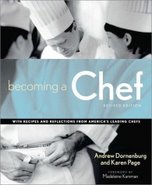
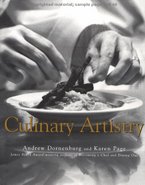


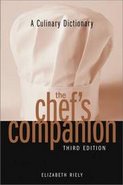


.jpg)



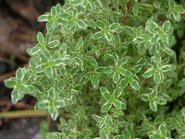


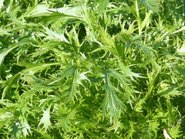
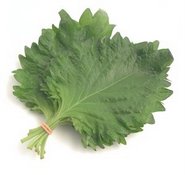

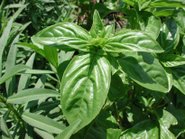
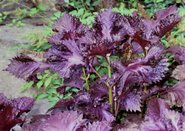
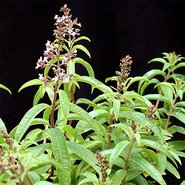
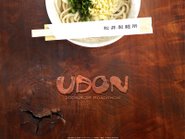


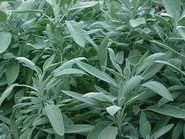
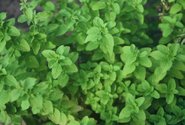

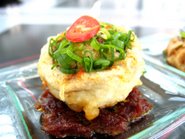


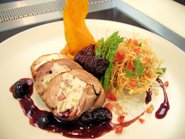
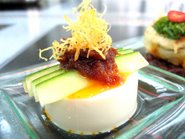
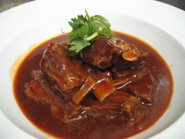
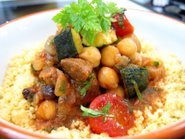
























































4 comments:
OH MY LORD...what a glorious post!!! All the local favourites! I'm definitely bookmarking this for future trips to Penang! Thank you!
You've done it again...another exquisite eloquent posting. Is there any way I can get your recipe for the Butternut Squash Soup with tomatoes and Seafood?
Thank you for all your wonderful articles. I read them all.
i just got back form Penang as well...miss the food as well as the Arburak (according to kopitiam uncle)(buah umbra or buah long long)!
The only place I go to for prawn noodles is in Taman Megah, PJ (Petaling Jaya). The coffeeshop is called Restoran Gembira. It's the only prawn noodles I've been eating since pri sch!
Yeah, then I moved to S'pore and I only get to eat it whenever I go back to M'sia to visit my grandparents. Sad, really..you should try it sometime. The soup base tastes really different from all the other prawn noodles I've tasted..it'll get you hooked! :D
Post a Comment